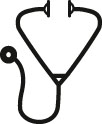Abstract

Background: Early T-cell precursor acute lymphoblastic leukemia (ETP-ALL) is a distinctive and extremely aggressive subtype of T-ALL. Clinically, relapses/refractoriness frequently occur in ETP-ALL. Therefore, re-achievement of complete remission (CR) for further hematopoietic stem cell transplantation (HSCT) is essential for relapsed/refractory ETP-ALL. However, previous reports indicated that the re-induction CR rate was very low. Several retrospective trials have demonstrated that remission rates after first salvage therapy range from 31%-44%. CR rates for clinical trials with newly registered drugs such as nelarabine or clofarabine in patients with relapsed/refractory ETP-ALL were reported to be 20%-23%. So, the best re-induction regimens are urgently needed. In preclinical studies, the BCL2 inhibitor venetoclax was shown to be an effective agent for T-ALL, especially for ETP-ALL, which is much more sensitive to venetoclax due to the contribution of high BCL-2/BCL-XL ratio and the addiction to BCL2 overexpression. Except for monotherapy, venetoclax showed promising synergistic effects when used in combination with MCL-1 inhibitor S63845. Our previous studies have shown that Homharringtonine (HHT) targets the MCL1 protein. Above findings provide rationale for combining venetoclax, HHT and cytarabine in patients with relapsed/refractory ETP-ALL. We were very interested in this finding and conducted this pilot trial in adult patients with relapsed/refractory ETP-ALL.
Methods: We conducted a pilot trial to evaluate the efficacy and safety of venetoclax plus HHT, cytarabine and colony-stimulating factor (G-CSF) (VGHA) induction chemotherapy (VEN 100mg d1, 200mg d2, 400mg qd d3-28, orally; HHT1.4mg/m2 qd d1-10 [Total daily dosage not more than 2mg], intravenous infusion; cytarabine 10mg/m2 q12h d1-14, hypodermic; G-CSF 200μg/m2 qd d1-14, hypodermic) in relapsed/refractory ETP-ALL. The study protocol was approved by the Institutional Review Board of the First Affiliated Hospital of Zhejiang University School of Medicine and conducted in accordance with the Declaration of Helsinki. Informed consent was obtained from all patients prior to any procedure.
Seven relapsed/refractory ETP patients were treated with VGHA regimen from November 23, 2021 to July 30, 2022 in 4 hematological centers in China.
Response assessment : The primary end point was the percentage of patients who achieved composite CR (CRc) (CR+Complete Remission with incomplete hematological recovery (CRi)). Secondary end points included overall survival (OS), disease-free survival (DFS), measurable residual disease (MRD) and adverse events.
Results: Seven diagnosed relapsed/refractory ETP-ALL patients were enrolled in this study with a median follow-up of 5 (1.5-8) months, with median age 56 (15-60) years' old. The CRc rate after the first cycle of the VGHA treatment was 85.7% (6/7), with 42.9% (3/7) in complete remission (CR), and 42.9% (3/7) in CRi. 1 (14.3%) patient achieved partial remission (PR, blast cell 8%), and further attained CR after the second cycle of the VGHA. So, the total CRc was 100%. Bone marrow MRD was detected by Flow cytometry. After the first cycle of VGHA treatment, MRD negativity (<0.01%) rate was 71.4% (5/7). One patient's MRD was 0.02%. Excitingly, after the second cycle of treatment, all 7 (100%) patients got MRD negative. As of the follow-up deadline (30 July, 2022), 6 (85.7%) patients were in sustained CR status, median duration of CR was 4 (1-8) months. Of these, three patients successfully bridged to allogenetic HSCT (allo-HSCT) and all of them remained in remission. One patient who achieved CR after second cycle of chemotherapy relapsed with the duration of CR only 1 month. No patients experienced early deaths, as well as chemotherapy-related deaths.
Conclusions: In summary,we initially demonstrated that VGHA regimen which might provide a new and effective choice when treating relapsed/refractory ETP-ALL patients. For young adult relapsed/refractory ETP-ALL patients, VGHA regimen was a safe and effective treatment bridging to allo-HSCT. This novel regimen is promising, and should be evaluated in larger sample size studies.
Trial registration: The trial was registered in the Chinese Clinical Trial Register, number ChiCTR2100048966.
Disclosures
No relevant conflicts of interest to declare.
OffLabel Disclosure:
Venetoclax is used in combination with azacitidine for the treatment of patients with acute myeloid leukemia who are not suitable for strong induction chemotherapy due to comorbidities, or newly diagnosed patients aged 75 years and older. Our group used venetoclax to treat ETP-ALL patient.
Author notes
 This icon denotes a clinically relevant abstract
This icon denotes a clinically relevant abstract
Asterisk with author names denotes non-ASH members.

This feature is available to Subscribers Only
Sign In or Create an Account Close Modal